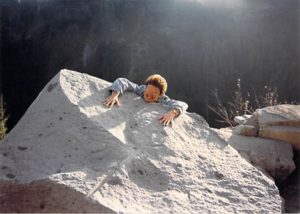I begin this post with a very important announcement: Due to health considerations, I am taking a hiatus from Higher Ed By Baylis LLC, and temporarily suspending its operations until at least the beginning of 2015. I plan on continuing my blog By’s Musings, posting as often as I can.
I have been so preoccupied with a number of things that I didn’t realize that it has been six months since my last post. During those six months, I have had to deal with a number of health difficulties. In addition, I have also experienced myriad feelings which combined the negativity of sadness, frustration, burden and concern, with the positiveness of joy, determination, encouragement and hope. More on the health difficulties and the cloud of feelings later in this post, and probably in subsequent posts. I am keeping the website and name going so that I can pick up operations again when I am able. One of my last posts was a December, 2013 post entitled Update on my Health .
The seven months since that post have been a journey. The headaches that began in October have continued constantly since this post. The intensity and location of these headaches vary throughout each day. Although there is no universally accepted definition or explanation of referred pain, my medical team believes that some of the headaches are referred pain, that is pain that is originating in one place and being expressed as pain in another location. For example, recently I wrenched my left knee when my foot slipped off a curb and my lower leg buckled. After a few minutes of very sharp pain in my left knee, the knee pain went away. Almost immediately, my continuing head ache switched locations from my left temple area to the area above and behind my right ear and increased its intensity from a “4” on the pain scale to a “6”.
In my December health post, I mentioned that an October 2013 MRI indicated a new growth in the hole left by the removal of the meningioma in March 2009. A follow-up MRI in December 2013 showed no change from the October 2013 MRI. In consultation with an oncologist, it was decided that the best approach in handling the new growth was a one-shot, mega-dose of radiation. That treatment was scheduled for March 2014, and went off without any glitches. However, within the next two weeks, I had two unscheduled trips to the hospital ER. On both occasions, I was admitted and spent a couple of days in the hospital. The two ER trips were only marginally related to each other and the radiation treatment. As a result of these stays, my hospital admission’s “rap-sheet” lists the following problems: TIA, localized seizure activity, dangerously high fever, unidentified infection, severe reaction to medications, and extreme exhaustion.
Following my second discharge, I started writing a follow-up to my April, 2013, post “Beware the Ides of March.” However, I ran into a number of road bumps and detours. The first was an eye infection which greatly limited my ability to read or write. Since mid-April, my online computer time has been limited to one hour a day. That’s hardly enough time for me to read and answer my normal, daily email traffic. Currently, I have a backlog of more than 1000 unanswered emails, many of them unread. This weighs heavily on my mind, as I am afraid I will begin to lose contact with people and higher education.
The above hints at the reasons for my feelings of sadness and frustration. I have been working on this post for a whole week. In many ways, higher education moves slower than a snail. But, in some ways, things are changing daily, if not hourly. There is so much reading that one must do to stay current. In the midst of these health difficulties, my mind has not shut down completely. I have accumulated more than 400 ideas for blog posts and essays.
Whenever I attempted to use pen and paper to flesh out these ideas, I find myself needing a reference that is buried in the bowels of my computer. After a few minutes of digging, my eyes become too tired to focus properly. I shut the computer down. Fighting a headache, I try to turn off my mind and take a nap. This post has taken me more than four days to bring to completion.
So much for the negativity. To finish this post on a more positive note, I am determined to recover and return to work and writing. I am thankful for God’s protection and care through trying times. I have had a number of doctors tell me there are no medical or scientific reasons to explain why I am still walking and talking. I may not be back to my pre-tumor condition. I may never get all the way back to that position. However, I pray that I can live as Paul commanded the Philippians to live:
“Rejoice in the Lord alway: and again I say, Rejoice.” (Phil 4:4, KJV),
or as the weeping prophet, generally assumed to be Jeremiah, wrote to the suffering Israelites,
“This I recall to my mind, therefore have I hope. It is of the Lord‘s mercies that we are not consumed, because his compassions fail not. They are new every morning: great is thy faithfulness. The Lord is my portion, saith my soul; therefore will I hope in him. The Lord is good unto them that wait for him, to the soul that seeketh him. It is good that a man should both hope and quietly wait for the salvation of the Lord.” (Lam 3:21-26 KJV).
We should rejoice in the trying times as well as the good times, and seek Him at all times.

